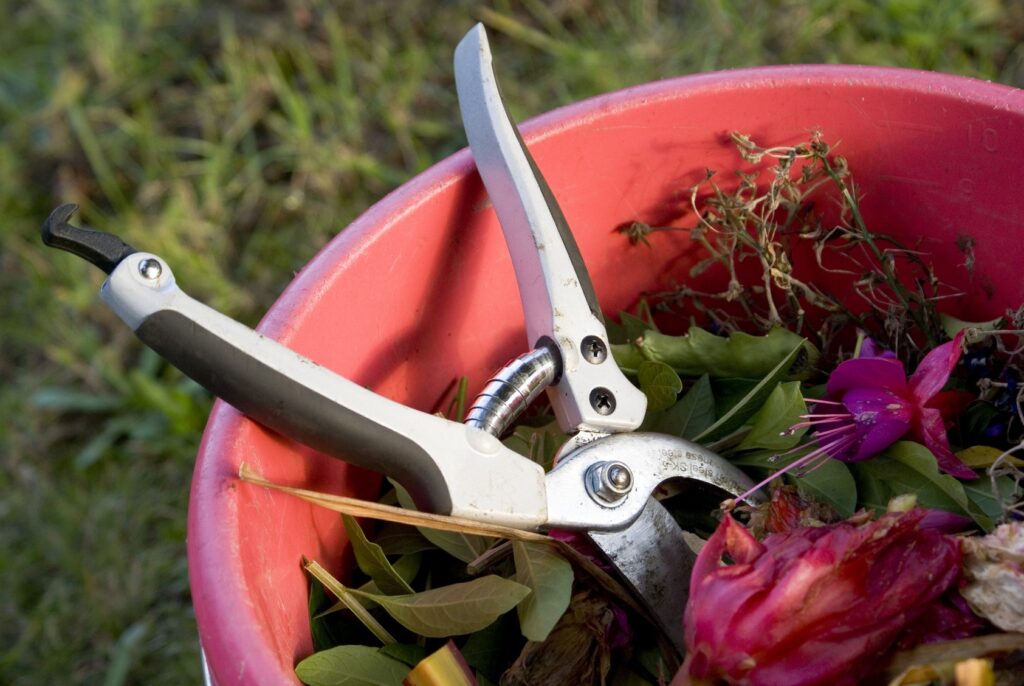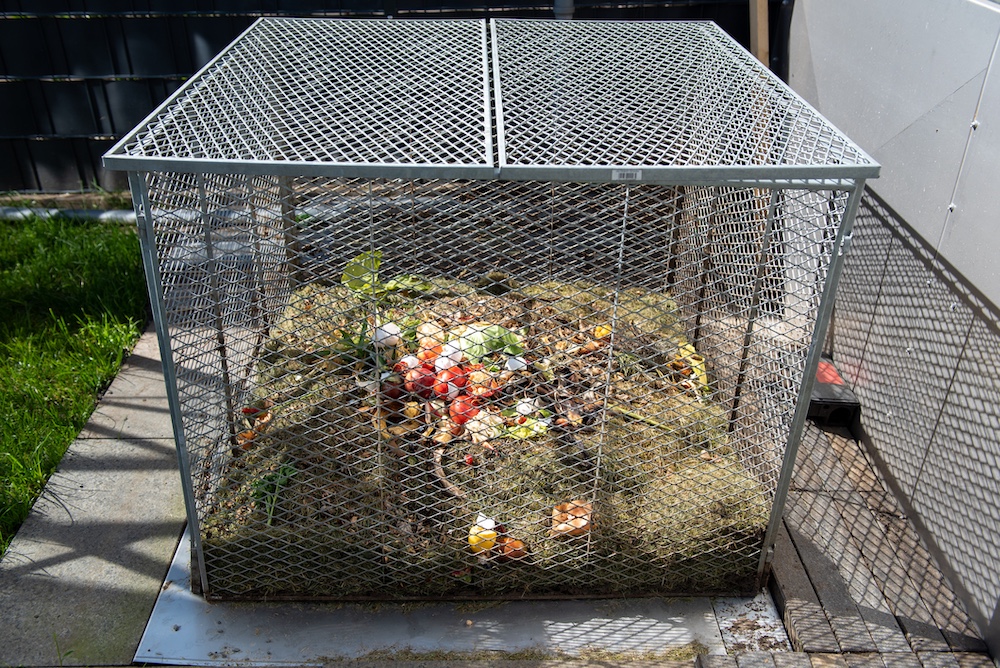When it comes to composting, fall and winter are prime times. The leaves Mother Nature drops to the ground are the first and best ingredients to build up the pile Although compost piles are considered a sustainable way to keep landscape waste and certain kitchen waste out of the landfill, they come with certain cautions: Pests.
We’re not talking about insect pests. We’re talking about rats, mice, squirrels, voles, gophers, foxes and other critters that scavenge for food. They dig through the compost pile, looking for tasty morsels of food scraps, roots, leaves and other material.
How bad the pest problem depends on the type of compost pile you have, where you live, what food scraps (if any) you put in the pile and how well it is protected.

What is compost?
Compost is a generic term for decomposed yard and food waste. Small pieces of waste – a mix of green and brown materials – are piled together. The compost bin or pile is usually 3 by 3 or 5 by 5 feet square. If possible, locate it on a concrete slab.
Yard waste is the most common ingredient available for home composting. The compost pile mimics the natural decomposition of the leaves, stems and clippings found on a woodland floor. Kitchen waste also can be added to the compost pile, but pest precautions are warranted.
The sun heats and cooks the mix, which needs to be turned periodically to promote the decomposition process. Do this all winter and in spring, you’ll have compost, one of the best amendments for soil in the landscape. If you are new to home composting, fall is a great time to start.
How to keep pests out of compost
Keeping pests out of compost is easier with metal or heavy-duty plastic, enclosed bins or tumblers. These are particularly useful in urban areas and small landscapes. Some are small enough that they can be accommodated on gardeners’ patios or balconies at apartments and condos. However, depending on their size and how they are made, they can be difficult to turn or roll because of their weight with dampened material, especially yard waste.
The enclosed tumblers might be worth considering for composting food scraps without the threat of pest. Build a traditional open compost pile for yard waste.
Eliminating food waste from an open compost pile greatly reduces scavenging pests. Meats, fish, poultry, bones, dairy, fats, grease and whole eggs should never be composted. They are slow to break down, create unpleasant orders and attract rats, other rodents and wild animals like foxes. Opossums and racoons are attracted to the aromas of fruits and vegetables.
Enclose compost pile
Serious scavenger pest problems can be controlled by enclosing the compost pile with aluminum door or screen shields, such as what’s used to prevent pet damage, hardware cloth or other material with a similar grid.
Attach the screens on each side and the top of the compost bin to keep rats and other pests from climbing in. You can also attach the screen material to a frame that will fit the pile. You want to make sure all seams are tight, so critters can’t loosen them and crawl in.
Make sure the top and at least one side of the enclosure can be removed or opened temporarily to add ingredients, to turn the pile and to remove the compost for use in the landscape.
Pests in the compost pile can carry diseases. An inviting compost pile also lets animal pests know you have food in the garden and they likely will start munching on what you planned for dinner.

Compost pile location
Locating the compost pile on a concrete slab or tight pavers deters rats from burrowing or chewing through the bottom. If the base of the bin is on soil, it’s usually recommended that you protect the bottom from a pest invasion.
Dig a 10- to 12-inch deep and wide trench around the perimeter. Anchor hardware cloth in the trench. The hardware cloth or screening should reach 12 to 18 inches up the side of the bin. Make sure it is well anchored to the bin, too
Turn the compost pile every few weeks to make sure all parts are getting heated thoroughly. Not only will the heat speed up process, turning reduces stagnation in the pile, which causes bad odors. Odors attract scavenger pests to the compost pile.
What if compost pile isn’t enclosed?
For a pile that isn’t enclosed, don’t put food scraps in the pile.
What about bugs in compost pile?
Usually, insects are not a serious problem with a well-managed compost pile. A lot of kitchen scraps in the compost pile may attract flies, however. Be sure to bury food scraps in the center of the pile and cover them with compost of soil.